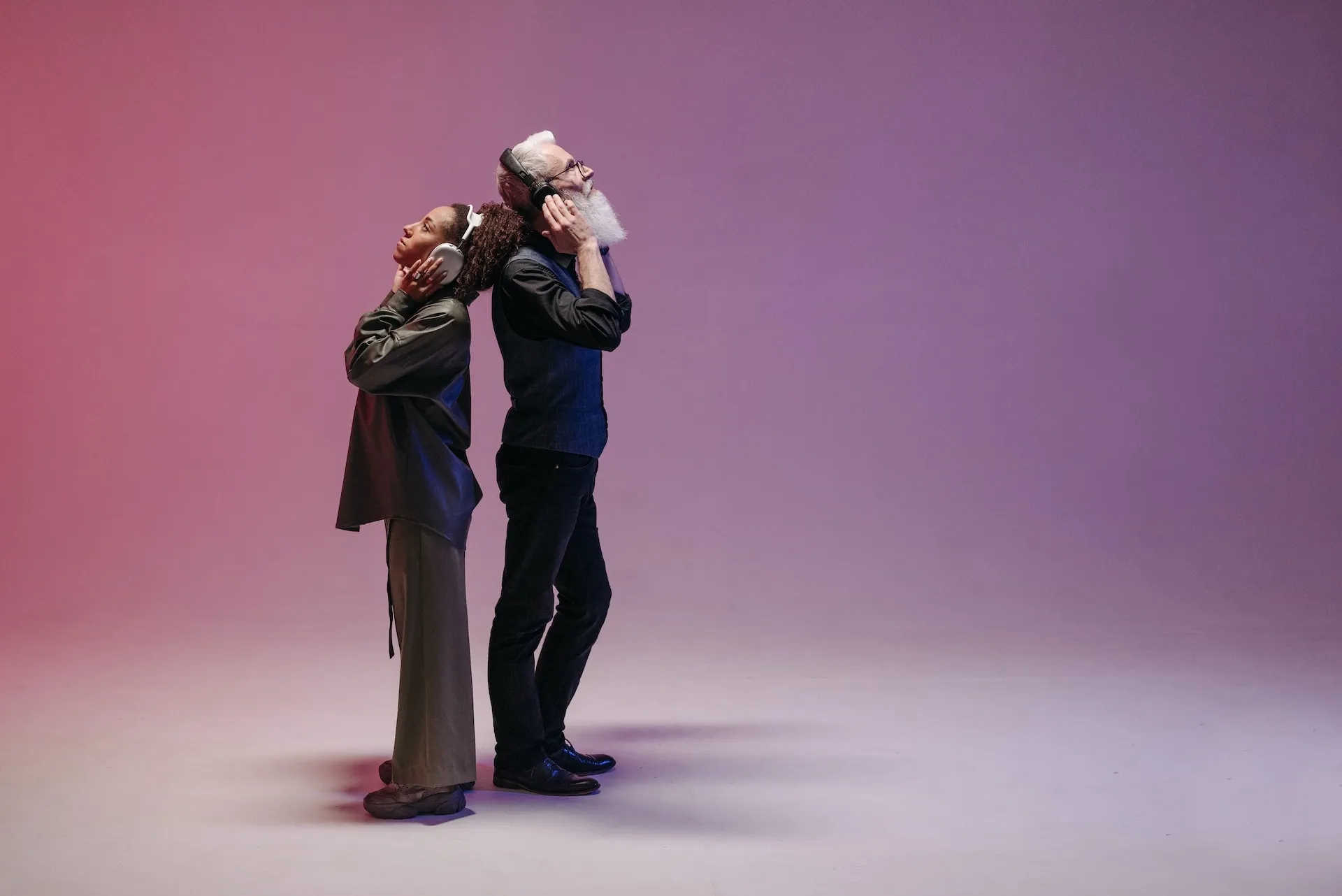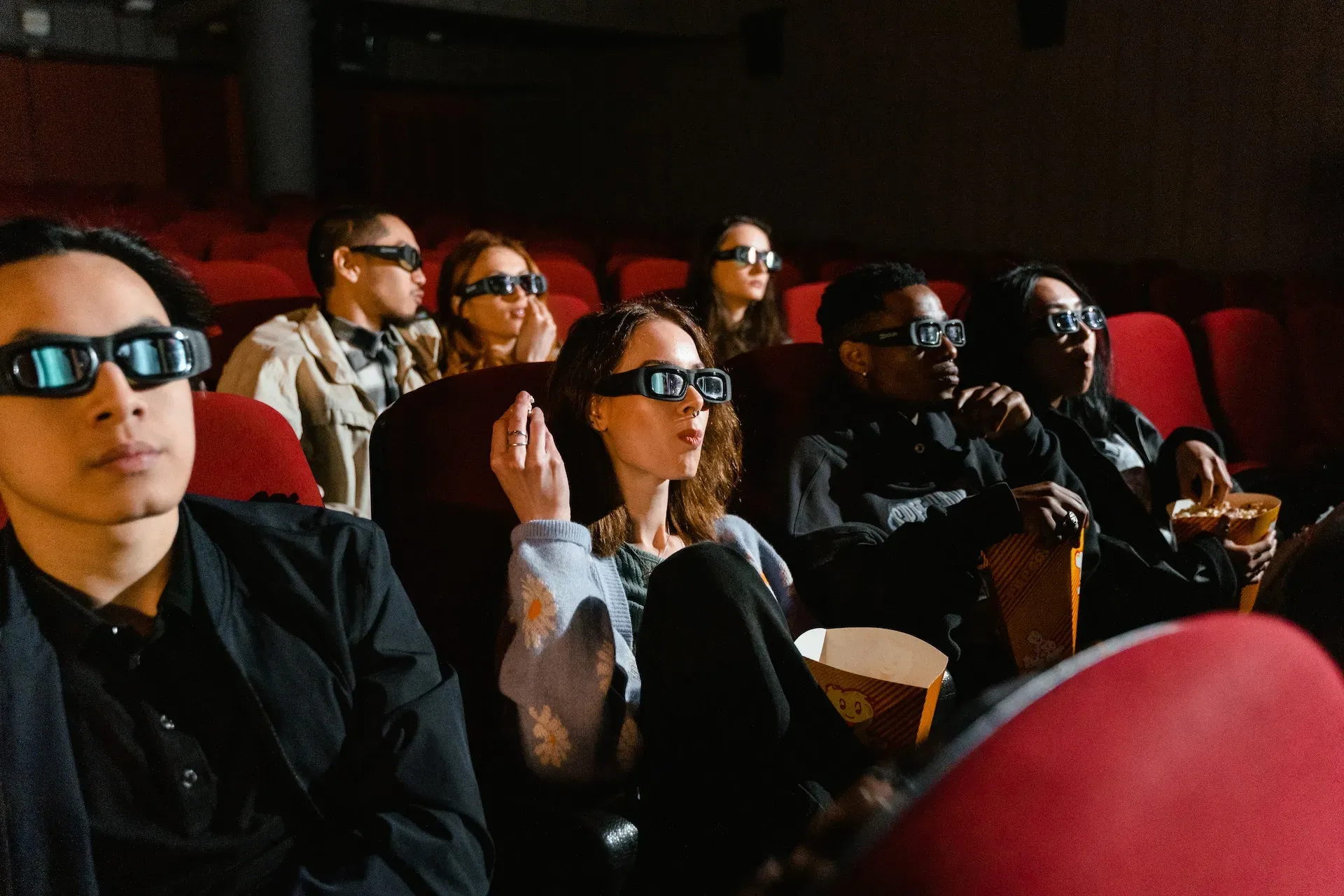Diegetic sound: What is it and how do you use it?
Diegetic and non-diegetic sound are an essential part of filmmaking. But what is diegetic sound, how do you use it, and what are the best examples?

Knowing the difference between diegetic and non-diegetic sound should be an essential part of your content creation toolkit. But what exactly is it, how does it work, and how can you use it?
What is diegetic sound?
Diegetic sound is any sound that comes naturally from the world of the video. Basically, if you were a character in a film, any of the noises you could hear in that scene would be classed as diegetic. This includes on-screen things like dialogue, alongside off-screen audio like sirens, chatter, applause, and more.
Why is diegetic sound used in movies and video content?
Diegetic sound adds realism to your content. Whether you’re filming a busy street or orchestrating a seaborne battle in the Caribbean, diegetic sound makes viewers feel like they’re in the scene. If you scrub out all the sound and just add audio effects in post-production, your footage will feel detached and weird – unless that’s the vibe you’re going for, of course.

Diegetic sound helps people suspend their disbelief. Realistic, believable audio gives the world of your content an authentic edge. Even if it’s set on a space station, diegetic sound can make it feel grounded.
What’s the difference between diegetic and non-diegetic sound?
Every Yin has a Yang, every North a South. So, with diegetic sound comes its opposite: non-diegetic sound.
What is non-diegetic sound?
Non-diegetic sound is sometimes called ‘non-literal sound’. In contrast to diegetic sound, non-diegetic sound can’t be heard in the world of the film. For that reason, all non-diegetic sound is added in post-production. It’s often used to emphasize a mood, present a clue to the audience, or tell them something directly.
Narration and soundtracks are the most notable examples of non-diegetic sound. Indiana Jones can’t hear the incredible John Williams score as he goes around kicking butts and taking names, but we as an audience can. And it’s exciting.

Are sound effects non-diegetic?
It’s worth noting that any audio added, overdubbed, and mixed in post-production can potentially count as diegetic. For example, if you film an explosion, then add an explosion sound effect while editing, the explosion sound is still diegetic. It’s still ‘in-world’ audio, even though it’s been edited.
If you include sound effects like video transitions, they’d count as non-diegetic. As a general rule of thumb, remember: if it’s not heard in the real-life context of the video, it’s probably non-diegetic.
Are thoughts and inner monologues non-diegetic?
Internal monologues are the voices inside the characters’ heads. They’ve been used in everything from Edward Norton’s character in Fight Club to the wildly confessional TV series Peep Show. But are these instances diegetic or non-diegetic? After all, if you watch Peep Show, you literally see the action from the characters’ point of view.

This kind of audio is called internal-diegetic sound – a halfway house between the two kinds we’ve already covered. Internal-diegetic sound is great for revealing people’s motives and unconscious thoughts without having to say them out loud or act upon them.
Need some music to soundtrack your diegetic or non-diegetic content? We’ve got you covered. Hit the button below for 40,000 tracks and 90,000 top-drawer sound effects.

Can you mix diegetic and non-diegetic sound?
Neither diegetic or non-diegetic sound is mutually exclusive. Of course, you should understand when to use which, but content can be enhanced by mixing diegetic and non-diegetic sound.
You could play a non-diegetic sound as your intro music, then cut to a character humming the same tune. This establishes the song as part of your content’s real world, while also easing viewers into the narrative and character. This is sometimes called trans-diegetic sound, as it straddles both the diegetic and non-diegetic zones.
What are some great examples of diegetic sound?
So, we’ve gone through the differences between diegetic and non-diegetic sound, and when to use each. Let’s look at some shining examples of diegetic sound in film and online content.

Diegetic music in Shaun of the Dead
Edgar Wright’s 2004 masterpiece, Shaun of the Dead, is one of the best horror comedies out there. Besides Wright’s choppy, lyrical style and the razor-sharp screenplay, Shaun of the Dead uses diegetic music to pile on the laughs and make a point.
We won’t show the most famous example – where our heroes dispatch a bunch of zombies with Don’t Stop Me Now playing on a jukebox – because it’s just too darn gruesome. However, that scene is rib-splittingly funny, using music as diegetic sound to pump the characters up and essentially choreograph the fight.
A more family-friendly example can be seen below. Shaun sits on the bus with Zombie Nation’s ‘Kernkraft 400’ playing in the background. As the camera zooms in, the music switches from non-diegetic to diegetic, implying that it’s being played way too loud on the other passenger’s headphones. It’s a simple, sneaky trick that foreshadows the movie’s zombie plot, implying that Shaun is living in a ‘zombie nation’.
Diegetic sound in Moonfall
Roland Emmerich’s Moonfall is one of the most ridiculous movies to hit theaters. The premise is simple: the moon is falling out of the sky. Mayhem ensues; skyscrapers topple, vehicles fall from the sky.
It’s unbelievable carnage, needing some diegetic sound to match the apocalyptic visuals. Hats off to the post-production crew for making it sound suitably biblical: crunching, crashing, exploding. It’s the end of the world, and that can’t be achieved without editing. Imagine experiencing that in 8D audio on something like Dolby Atmos!
Non-diegetic sound with Irfan Junejo
We’ve covered some pretty big examples above, but small-scale content is just as valid as Hollywood movies. Watch Epidemic Sound ambassador Irfan Junejo break down the usage of non-diegetic sound effects via risers, analog camera clicks, projector sounds, keyboard typing sounds, and swooshes.
With diegetic and non-diegetic sound definitions and examples under your belt, it’s time to start experimenting. If you’re stuck for music ideas, don’t worry. We get it. Licensing and rights can be a headache, so let us take care of it.
Our catalog is high-quality, affordable, and safe. An Epidemic Sound subscription goes beyond royalty-free music, removing the headache of licensing and freeing you up to do what you do best. You can enjoy the safety of our license hand-in-hand with our massive catalog of 40,000 tracks, covering just about every genre you can think of. You’ll also gain unlimited access to our advanced search functions — finding the right sound’s never been easier.
It’s better than royalty-free. It’s worry-free. Get started with Epidemic Sound below.

Filmmakers, look this way! Level up your skills and learn more about background music for videos, including:
Make your video editing count and browse our massive catalog of music for filmmakers.

